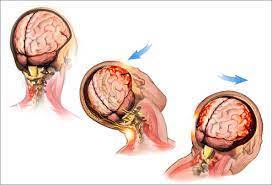How to Prevent Traumatic Brain Injury (TBI)
Introduction:
Traumatic Brain Injury (TBI) is a significant public health concern globally, with millions of cases reported annually. TBI can result from various incidents such as falls, vehicle accidents, sports injuries, and assaults. The consequences of TBI can be severe, affecting physical, cognitive, and emotional functions, and in severe cases, leading to long-term disability or death. However, many TBIs are preventable through understanding risk factors and adopting preventive measures. In this comprehensive guide, we will explore the various strategies and lifestyle changes that can help prevent Traumatic Brain Injury.
Understanding Traumatic Brain Injury:
Before delving into prevention strategies, it's crucial to understand what TBI entails. TBI occurs when an external force injures the brain, disrupting its normal function. This disruption can manifest as mild, moderate, or severe, depending on the extent of the injury. Symptoms may range from temporary confusion and headache to unconsciousness and memory loss.
Common Causes of Traumatic Brain Injury:
1. Falls: Falls are the leading cause of TBIs, especially among children and the elderly. Prevention involves measures such as keeping floors clear of obstacles, installing handrails on stairs, and using appropriate safety equipment.
2. Vehicle Accidents: Motor vehicle accidents, including those involving cars, motorcycles, bicycles, and pedestrians, account for a significant portion of TBIs. Wearing seat belts, using child safety seats, and obeying traffic laws are crucial in preventing these injuries.
3. Sports Injuries: Participation in sports and recreational activities carries a risk of TBI, particularly contact sports like football, rugby, and boxing. Proper training, use of protective gear such as helmets, and adherence to safety rules can minimize this risk.
4. Assaults: Violence-related incidents, including physical assaults, domestic violence, and gunshot wounds, can result in severe TBIs. Prevention involves addressing underlying societal issues such as poverty, inequality, and access to mental health services.
Preventive Strategies:
1. Wear Helmets:
Helmets are essential protective gear that can significantly reduce the risk of head injuries during various activities, including cycling, skiing, skateboarding, and riding motorcycles. When choosing a helmet, ensure it fits properly and meets safety standards set by regulatory agencies.
2. Buckle Up:
Seat belts save lives by preventing occupants from being ejected from vehicles during accidents. Ensure that everyone in the vehicle wears a seat belt, including children who should be secured in appropriate car seats or booster seats.
3. Fall Prevention:
Falls are particularly common among older adults and children. To prevent falls, maintain a clutter-free environment, install grab bars and handrails in bathrooms and staircases, use non-slip mats, and ensure adequate lighting indoors and outdoors.
4. Supervise Children:
Children are naturally curious and prone to accidents. Supervise them closely, especially around stairs, playgrounds, and swimming pools. Teach them safety rules and encourage them to wear protective gear when engaging in sports or recreational activities.
5. Drive Safely:
Adhere to speed limits, avoid driving under the influence of alcohol or drugs, eliminate distractions such as texting while driving, and always wear a seat belt. Defensive driving techniques can also help reduce the risk of accidents.
6. Practice Concussion Awareness:
Concussions are a form of mild TBI that often occurs in contact sports and recreational activities. Educate yourself and others about the signs and symptoms of concussion, and seek medical attention promptly if a head injury is suspected.
7. Promote a Culture of Safety:
Whether at home, school, or work, prioritize safety by identifying and addressing potential hazards. Encourage open communication about safety concerns and empower individuals to take proactive measures to prevent injuries.
8. Support Legislation and Policy Changes:
Advocate for laws and policies that promote safety, such as mandatory helmet laws for cyclists and motorcycle riders, stricter enforcement of traffic regulations, and improved workplace safety standards.
Conclusion:
Preventing Traumatic Brain Injury requires a multifaceted approach that addresses various risk factors and promotes safety at individual, community, and societal levels. By raising awareness, implementing preventive measures, and advocating for change, we can significantly reduce the incidence and severity of TBIs, ultimately saving lives and preserving quality of life. Remember, prevention is key, and every effort counts in safeguarding against this debilitating condition.


